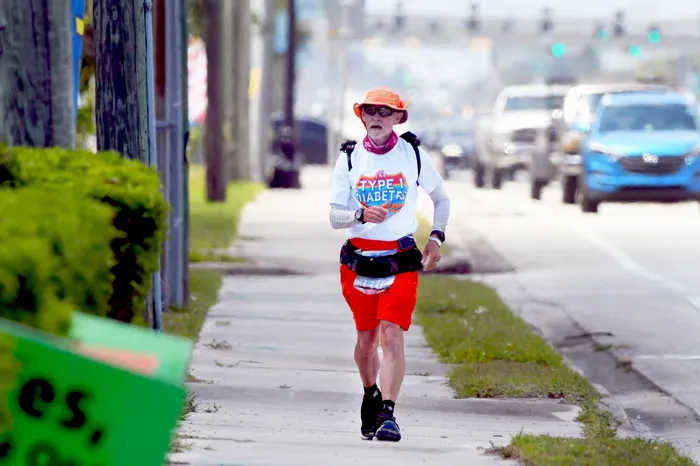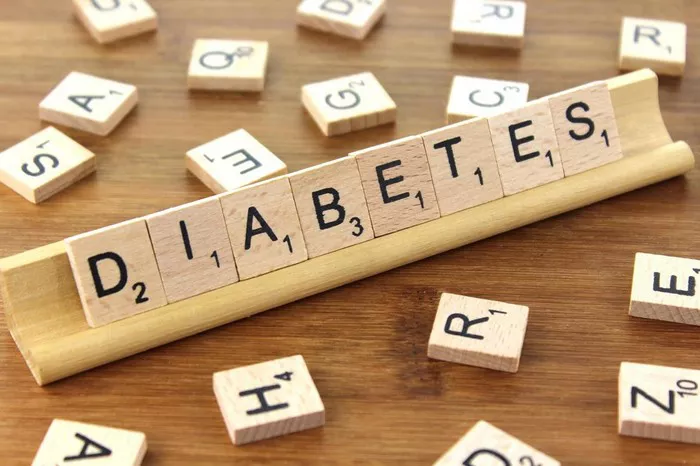Type 2 diabetes is a chronic condition that affects the way the body processes blood sugar (glucose). When glucose levels rise too high, a condition known as hyperglycemia occurs. Persistent hyperglycemia is a hallmark of type 2 diabetes and can lead to both short-term discomfort and long-term complications if not properly managed.
In this article, we will explore the signs and symptoms of high blood sugar, the underlying causes of hyperglycemia, and what individuals can do to manage and prevent spikes in glucose levels. This knowledge is vital for people with diabetes, as recognizing the early signs of hyperglycemia can help prevent more severe health problems down the line.
Understanding Hyperglycemia
Hyperglycemia occurs when there is an excessive amount of glucose in the bloodstream. This typically happens when the body either doesn’t produce enough insulin or is unable to use insulin effectively—a condition known as insulin resistance. Insulin is the hormone that helps transport glucose from the blood into the cells, where it’s used for energy. Without sufficient insulin, glucose builds up in the bloodstream, leading to high blood sugar levels.
What Are the Signs of High Sugar Levels?
High blood sugar levels can manifest in a variety of ways, depending on the severity and duration of the condition. Some symptoms are mild and may go unnoticed at first, while others are more pronounced and can significantly affect daily life. Below are the most common signs of high blood sugar, ranging from early indicators to more severe symptoms.
Increased Thirst (Polydipsia)
One of the earliest and most common signs of high blood sugar is increased thirst. This symptom, known as polydipsia, occurs because excess glucose in the bloodstream causes the kidneys to work harder to filter and remove the sugar from the body. As the kidneys produce more urine to flush out the excess glucose, dehydration can occur, leading to increased thirst.
People with hyperglycemia often find themselves drinking large amounts of water or other fluids but still feeling thirsty. This cycle of drinking and urinating is a key indicator that blood sugar levels may be elevated.
Frequent Urination (Polyuria)
Alongside increased thirst, frequent urination (polyuria) is another classic symptom of high blood sugar. When blood glucose levels are too high, the kidneys attempt to filter out the excess sugar by increasing urine production. This leads to more frequent trips to the bathroom, particularly during the night (nocturia).
Frequent urination is often one of the first signs that prompts individuals to seek medical advice, especially if they find themselves waking up multiple times during the night to urinate.
Dry Mouth and Dehydration
As the body loses fluids through increased urination, dry mouth and dehydration can occur. Dehydration can also lead to dry skin, a sticky feeling in the mouth, and cracked lips. Despite drinking more fluids to combat the excessive thirst, individuals with hyperglycemia may still experience signs of dehydration because the body is losing fluids faster than they can be replaced.
Fatigue and Weakness
High blood sugar levels can cause fatigue and a general feeling of weakness. Glucose is the body’s main source of energy, and when it’s not being properly utilized due to insulin resistance or insufficient insulin, cells are starved of energy. This leads to feelings of extreme tiredness, even after a full night’s sleep or after consuming food.
Fatigue associated with hyperglycemia can be overwhelming and affect a person’s ability to carry out daily activities. It may also lead to difficulty concentrating, lack of motivation, and irritability.
Blurred Vision
High blood sugar levels can affect vision, causing it to become blurry. This occurs because elevated glucose levels cause the lenses in the eyes to swell, leading to changes in vision. Blurred vision is often temporary and improves once blood sugar levels are brought back into a normal range, but prolonged hyperglycemia can lead to more serious eye problems, including diabetic retinopathy and eventual vision loss if left untreated.
Headaches
Headaches are a common symptom of high blood sugar. They can vary in intensity from mild discomfort to severe migraines. Headaches occur because the body is under stress from trying to manage excess glucose levels, and dehydration can also contribute to the severity of headaches.
Frequent or severe headaches should not be ignored, especially in individuals with diabetes, as they may be a sign of uncontrolled blood sugar levels.
Unexplained Weight Loss
Unexplained weight loss is a less common but significant sign of hyperglycemia, particularly in people who are newly diagnosed with diabetes. When the body can’t use glucose for energy due to insulin resistance, it begins to break down fat and muscle tissue to use as an alternative energy source. This can lead to unintended weight loss, even if the person is eating normally or experiencing increased hunger.
Unexplained weight loss should be investigated by a healthcare professional, as it can indicate that blood sugar levels are dangerously high and the body is not functioning properly.
Increased Hunger (Polyphagia)
Increased hunger, or polyphagia, is another common symptom of high blood sugar. Despite having plenty of glucose in the bloodstream, the body’s cells are not able to use it for energy because of insulin resistance. As a result, the brain signals hunger in an attempt to get more energy into the body. This can lead to overeating and further complicates the management of blood sugar levels.
People with hyperglycemia may feel ravenous, even after eating large meals, because their cells are still not receiving the glucose they need.
Slow-Healing Sores and Infections
High blood sugar levels can impair the body’s ability to heal wounds and fight infections. This is because elevated glucose levels can damage blood vessels, reducing blood flow to affected areas. Additionally, high sugar levels can weaken the immune system, making it harder for the body to fend off infections.
Individuals with hyperglycemia may notice that cuts, sores, or bruises take longer to heal than usual, and they may be more prone to infections, particularly in the skin, gums, and urinary tract.
Numbness or Tingling in the Hands and Feet (Neuropathy)
Long-term hyperglycemia can damage the nerves, leading to a condition known as diabetic neuropathy. Symptoms of neuropathy include numbness, tingling, or a burning sensation in the hands and feet. This occurs because high blood sugar levels can damage the small blood vessels that supply the nerves, particularly in the extremities.
Diabetic neuropathy is a serious complication of poorly managed diabetes and can lead to more severe problems, including loss of sensation and the development of ulcers or infections in the feet.
Flushed Skin and Warmth
Some individuals with hyperglycemia may experience flushed skin or a feeling of warmth. This is due to the body’s attempts to compensate for the excess glucose in the blood by increasing circulation to certain areas of the skin. Flushed skin is often seen in conjunction with other symptoms such as dehydration and increased thirst.
Causes of Hyperglycemia
Understanding the causes of hyperglycemia is essential for preventing and managing high blood sugar levels. Some of the most common causes include:
Poor Diet Choices: Eating large amounts of carbohydrates, especially simple sugars, can cause blood sugar levels to spike, particularly in individuals with type 2 diabetes who are already insulin resistant.
Skipping or Missing Medication: Many people with type 2 diabetes require medication to help regulate their blood sugar levels. Skipping doses or taking incorrect amounts of medication can lead to hyperglycemia.
Stress: Physical and emotional stress can cause the body to release hormones such as cortisol and adrenaline, which can raise blood sugar levels.
Lack of Physical Activity: Exercise helps the body use glucose for energy. A sedentary lifestyle can lead to higher blood sugar levels, especially after meals.
Illness or Infection: During periods of illness or infection, the body may release stress hormones that raise blood sugar levels. This can occur even in individuals who do not typically have high blood sugar.
Complications of Untreated Hyperglycemia
If left untreated, hyperglycemia can lead to serious health complications, including:
Diabetic Ketoacidosis (DKA): This is a life-threatening condition that occurs when the body begins to break down fat too quickly for energy. It produces ketones, which can accumulate in the blood and become toxic. DKA is more common in people with type 1 diabetes but can also occur in those with type 2 diabetes.
Cardiovascular Problems: Prolonged high blood sugar levels can damage blood vessels and increase the risk of heart disease, stroke, and other cardiovascular issues.
Nerve Damage (Neuropathy): As mentioned earlier, untreated hyperglycemia can lead to nerve damage, particularly in the extremities, which can result in pain, numbness, or even the need for amputation.
Kidney Damage (Nephropathy): High blood sugar can damage the blood vessels in the kidneys, leading to kidney disease or even kidney failure.
Eye Problems (Retinopathy): Chronic hyperglycemia can damage the blood vessels in the eyes, leading to vision problems and, in severe cases, blindness.
Managing and Preventing High Blood Sugar
Effective management of high blood sugar levels involves a combination of lifestyle changes, medication, and regular monitoring. Here are some key strategies for managing and preventing hyperglycemia:
Monitor Blood Sugar Regularly: Frequent blood glucose monitoring is essential for identifying spikes in blood sugar levels and taking timely corrective action.
Adopt a Balanced Diet: Eating a balanced diet that includes complex carbohydrates, lean proteins, and healthy fats can help stabilize blood sugar levels. It’s important to limit the intake of sugary foods and refined carbohydrates that can cause blood sugar to spike.
Stay Active: Regular physical activity helps the body use insulin more effectively and lowers blood sugar levels. Aim for at least 150 minutes of moderate-intensity exercise each week.
Take Medications as Prescribed: People with type 2 diabetes may need to take medications such as insulin, metformin, or other glucose-lowering drugs. It’s crucial to follow the prescribed regimen and consult a healthcare provider if blood sugar levels remain uncontrolled.
Manage Stress: Stress management techniques such as mindfulness, meditation, and deep breathing exercises can help reduce the impact of stress on blood sugar levels.
See also: What Are the Symptoms of Uncontrolled Diabetes?
Conclusion
Recognizing the signs of high blood sugar is crucial for individuals with diabetes or those at risk for the condition. Symptoms such as increased thirst, frequent urination, fatigue, and blurred vision can be early indicators of hyperglycemia. Left unchecked, high blood sugar can lead to serious complications, including cardiovascular problems, nerve damage, and kidney failure.
By understanding the causes and symptoms of hyperglycemia and taking proactive steps to manage blood sugar levels, individuals can prevent long-term complications and maintain a better quality of life. Regular monitoring, a balanced diet, physical activity, and proper medication are the cornerstones of effective blood sugar management for people with type 2 diabetes.
Related topics:
What Does a Diabetic Stroke Feel Like?
























